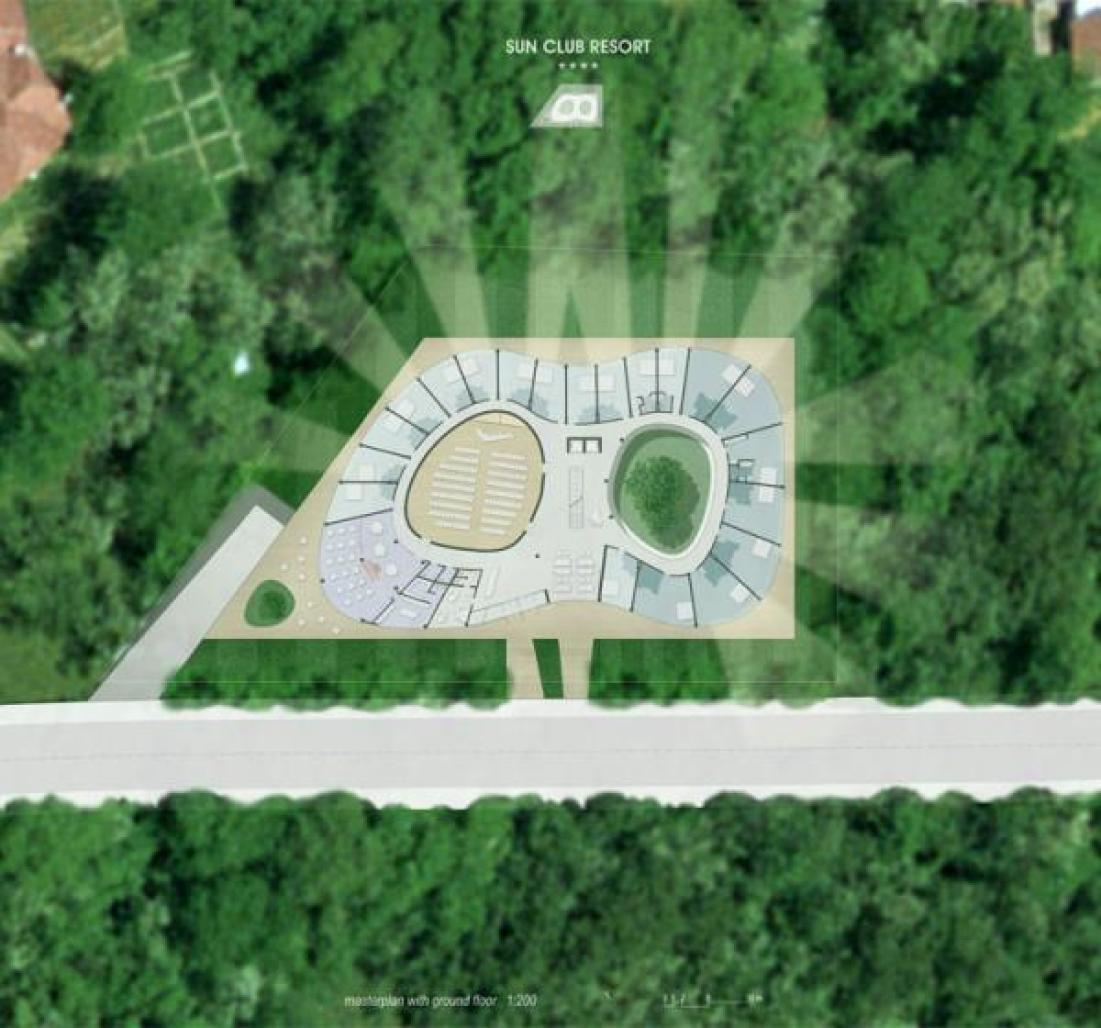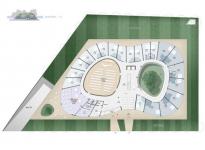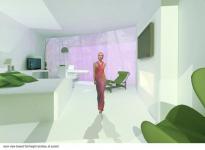1. INTRO
Building into nature is a frequent challenge in the architectural field. Basically it can be solved in two different ways, each one offering different strenghts, just depending of the situation, needs, site morphology and amount of needed surface. One way is to divede the volume into smaller parts and giving each part something people expect from this sort of premises: natural look {mostly wood, stone etc} and known identity and typologies. It is a sort of vernacular-camouflage way of solving the problem and it is what people usually recognize as “into nature”. For instance, it is what industry have produced giving us those small wooden houses to put in our gardens for storage or kids. It’s also the reason why housing fences are normally green colored and why we put wooden “veranda” or “pergola” in the back or in front of our homes, even if it is just a modern and minimalist one. This way is the architecture we usually find in mountain places. Neither it impresses us, nor it fulfils our new and modern use and needs without being necessary different from what it should be. But we have to accept it. A modern building is contemporary not for its materials but for the way it solves our modern life needs.
And if it does, it is just half of the way.
The “users” of a building are indeed not only the ones who live, work, sleep, perform activities in it, but also the ones who surround it. From near or from a distance. So also the stroller, the person-who-goes-by, and in general all the people who come in touch with {or in sight of} the building, are de facto users. Planners should also take care of them. They {numerically} are the majority. They are the social base that the building is made for. Therefore architecture is all about solving a site toward a need, giving each user his own role in the play. Taking care of rules, static, experience, norms, which are all the “entry level”, the basic requirements, of architecture. But just satisfying them does not necessarily grant anything else. And this is the other half part we need to close the circle and complete the picture.
Let’s see how we did it.
The second way of approaching “building into nature” is to care about the site, the plot situation, the pre-existence and the general “soul” of that particular place. Building is, anyway, to invade a part of that place. To put something external, artificial in the middle of a “oh-my-god” stunning panorama. This is true for every kind of building, architecture, typology, materials and functions. So where is the difference of approach?
What it is necessary to remove {"natura naturalis"} is paid back with a functional object that takes care of this “seizure” by referencing to pre-existence as a generative element of the whole project.
So we have lost some green, but the new premise reminds us of that. It uses just the stolen green to build not only volumes but also the identity of the place. We have taken advantage of a necessary operation {invasion} and led it to be our project identity maker. What we have lost we have given back in the form of identity. Nobody {neither the “real” nor the “external” user} can say that nature is not there anymore. It’s not about “mimesis”, not about camouflage. We declare the artificial nature: saying it, we honor and celebrate that defeated part. Acting this way we preserve the idea of what it was, giving it the new role of spokesman of the whole building concept. This is the first concept.
2. ROLE
As we saw, architecture needs to be the medium among the site, the needs, and the poetry. Human needs are not all about rules and normative. Needs regard also fulfilment of social and emotional quest. We do not live for rules, neither we want them as unique way of determination of our way of life or the way we have to interact with objects, scenarios or other people. But they become necessary. Not sufficient. We still have a manoeuvre space between rules and complete fulfilment of<
2008
Favorited 1 times









